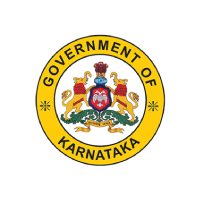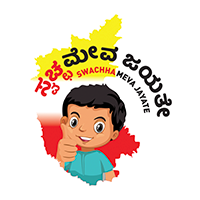Water is vital for all living beings and the sustainability of a state depends on proper maintenance of its water resources. With a growing population, the demand and supply of water keeps changing rapidly. Karnataka faces severe droughts due to climate change and changing rainfall patterns. The depletion of groundwater and surface water also adds to the water scarcity of our state.
Karnataka is the second most drought prone region of India after Rajasthan. Rainfall patterns play an important role in regulating the surface and ground water resources. Karnataka receives erratic rainfall which is unevenly distributed. About two-thirds of the geographical area of the state receives less than 750 mm of rainfall. The average annual rainfall is around 1,138 mm, received over 55 rainy days. It varies from as low as 569 mm in the east to as high as 4,029 mm in the west. The state has seven major river basins with the availability of 3475.2 TMC of water, of which only 1690.30 TMC i.e., only 50% of water gets used for the developmental purposes.
According to 2018 data, around 156 taluks are drought affected. The demands for water consumption have increased but depletion and degradation of water resources is causing water scarcity. The Government of Karnataka however is committed to serve the needs of the population with various schemes and programs which promote sustainable water usage, provision of drinking water for all and making Karnataka a water secure state.
Present Situation in Karnataka:

Ground water is the major source of drinking water in Karnataka. Due to the depletion of ground water and draining of rivers, the population is now struggling to meet its drinking water needs. The total replenishable ground water potential of the state is estimated at 17.03 Billion Cubic Meters (BCM), received during monsoon and non-monsoon seasons. The state has already over-drafted ground water by 64% and only 6.53 BCM is available for future use. Dedicated towards fulfilling the drinking water needs of rural areas, the Government of Karnataka has implemented water projects like Jaladhare, Multi Village schemes and installed Water Purification Plants across the state.
Jal Jeevan Mission Karnataka (JJM)
JJM has been implemented with a larger objective of providing safe drinking water to all households in Rural India by 2024 through Functional Household Tap Connections (FHTCs). In addition to maintaining sustainability of water sources, gray water management, water conservation, rain water harvesting & rejuvenation, and recharging of water bodies are also part of the mission. Jal Jeevan Mission includes a community based approach which includes effective Information, Education and Communication. Jal Jeevan Mission will create a nationwide movement for water which is also the priority of everyone. JJM is implemented in Karnataka as Mane Manege Gange Scheme.
History:
The vision of JJM is to improve the quality of life of the rural population by providing adequate quantity of clean drinking water at affordable rates for a sustainable period. From 1954 to present, many drinking water projects have come up. Prominent among them are National Water Supply Scheme, Water Nirmal Abhiyan, Jalanidhi, Swajaladhara, and National Rural Drinking Water Program. Jal Jeevan Mission will be implemented between 2020 to 2024, to provide operational water supply to every household in the rural areas, providing a capacity of 55 lpcd of clean drinking water every day. The main objective of this mission is to repair the existing inadequate drinking water supply in rural areas and to provide affordable delivery services to each household to improve the livelihoods of the rural community in the long term with respect to the supply of regular and pure drinking water.


Objectives:
- Providing FHTC to every rural household.
- Priority will be given to villages with scarcity of quality water, drought and desert affected areas which lack quality water.
- Systematic stewardship of water connection
- Providing Functional Tap Connection to every village school, anganwadi centre, village panchayat office, health centre and community development centres.
- Promoting self-motivated ownership in the local community.
- Maintaining sustainability in the water supply system.
- Empowering and developing human resources in this field.
- Educating beneficiaries / operators on various aspects and importance of safe drinking water.
Single Village Scheme (SVS)
In this scheme, a small tank (RCC Hume Pipe Cistern) installed with 3-4 taps is filled with water with the help of an electric pump from the well, to facilitate drinking water for the rural population. A total of 51,120 SVSs have been completed by 2018-19. Single Village Schemes are managed by Gram Panchayats.

Multi Village Scheme (MVS)
The surface water source based schemes are being taken up under Multi village drinking water programme under NRDWP. Measures are being taken up to provide clean and safe water, by purifying the surface water from various water sources, to the habitats where the water is affected with high nitrate, iron, TDS, fluoride elements, etc. Under this scheme, initiatives have been taken to find a permanent solution to the drinking water issues based on surface water sources such as rivers, lakes and canals.
The NRDWP project, under the 13th finance commission, and after the implementation of the Jal Nirmal Scheme Guidelines, administrative approval has been given to 548 (at the end of 2019) MVS, of worth around Rs.12875.51 crores including KUWSB. Of these, 474 projects have been completed at a cost of Rs.5663.85 crores and 64 projects with an estimated cost of Rs.6116.24 crores are in progress.

Water Purification Plants (WPP)
According to the standards defined by IS-10500: 2012, water purification plants have been installed in those habitats which are affected by health harming microbial infections and water sources with quality issues. More than 18,000 water purification plants have already been installed so far.


Water Conservation
Due to lack of awareness towards water conservation, we are now facing acute scarcity of water. Several taluks of Karnataka have been affected by severe drought year after year and the state is water stressed due to the lack of water literacy and community management. Rapid increase in need of fresh water for farming, drinking, industry and environmental requirements has also caused issues.
With the aim of finding a long-term solution for the water crisis, the government has declared 2019 as the Year of Water and launched Jalamrutha, the biggest community driven water conservation movement. This involves all sectors of the society like government, non-governmental organizations, institutions and the general public.
Pillars of Jalamrutha are:
Water Literacy: This encourages people to realize the value of every drop of water, through various behavioral change programs which are launched in all GPs, TPs, ZPs, Schools, Colleges, Government departments and other stakeholder institutions.
Water Conservation: It is done through rejuvenation of existing water bodies and creation of new ones, which also includes recharging receding water tables, reviving depleting water sources and creating new water bodies.
Smart Water Usage: This promotes conscious and efficient water usage. It creates a water conservation culture among the people of Karnataka through rainwater harvesting, use of technology and innovative applications.
Afforestation: To sustain water resources through community involvement, programs like planting 500 saplings in each Gram Panchayat has been undertaken.
Jalamrutha is the largest initiative towards water conservation and is a major step towards solving the water crisis in Karnataka.
Water Quality Monitoring and Surveillance Program (WQMSP)
The Department of Rural Drinking Water and Sanitation is predominantly focusing on supplying clean and safe drinking water to Rural Karnataka. Drinking water to rural areas will be supplied only after the water quality is assured. In this regards, the department is working on the chemical and bacteriological testing of all drinking water sources in rural areas.
In the first phase, at Gram Panchayat level, with the help of Village Water and Sanitation Committee (VWSC), chemical (fluoride, arsenic, nitrate, iron, pH, chloride) and bacteria (coliform, E.coli) samples of all drinking water sources in rural areas are being tested. Drinking water quality testing laboratories have been established by the department in each district and in 47 Taluk centers across the state to test water quality through Field Test Kit & H2S Vials and labs.


If the chemical elements are higher than the specified standards in the water samples tested in Taluk and District level laboratories, those water samples are tested at the state level with the help of Karnataka Pollution Control Board which is the referral laboratory under an agreement.
On basis of the reports provided by KPCB, if the water sample in a particular area is found unsafe, a Water Purification Plant will be installed by the department in that area as a temporary solution.

432 total views, 4 views today



